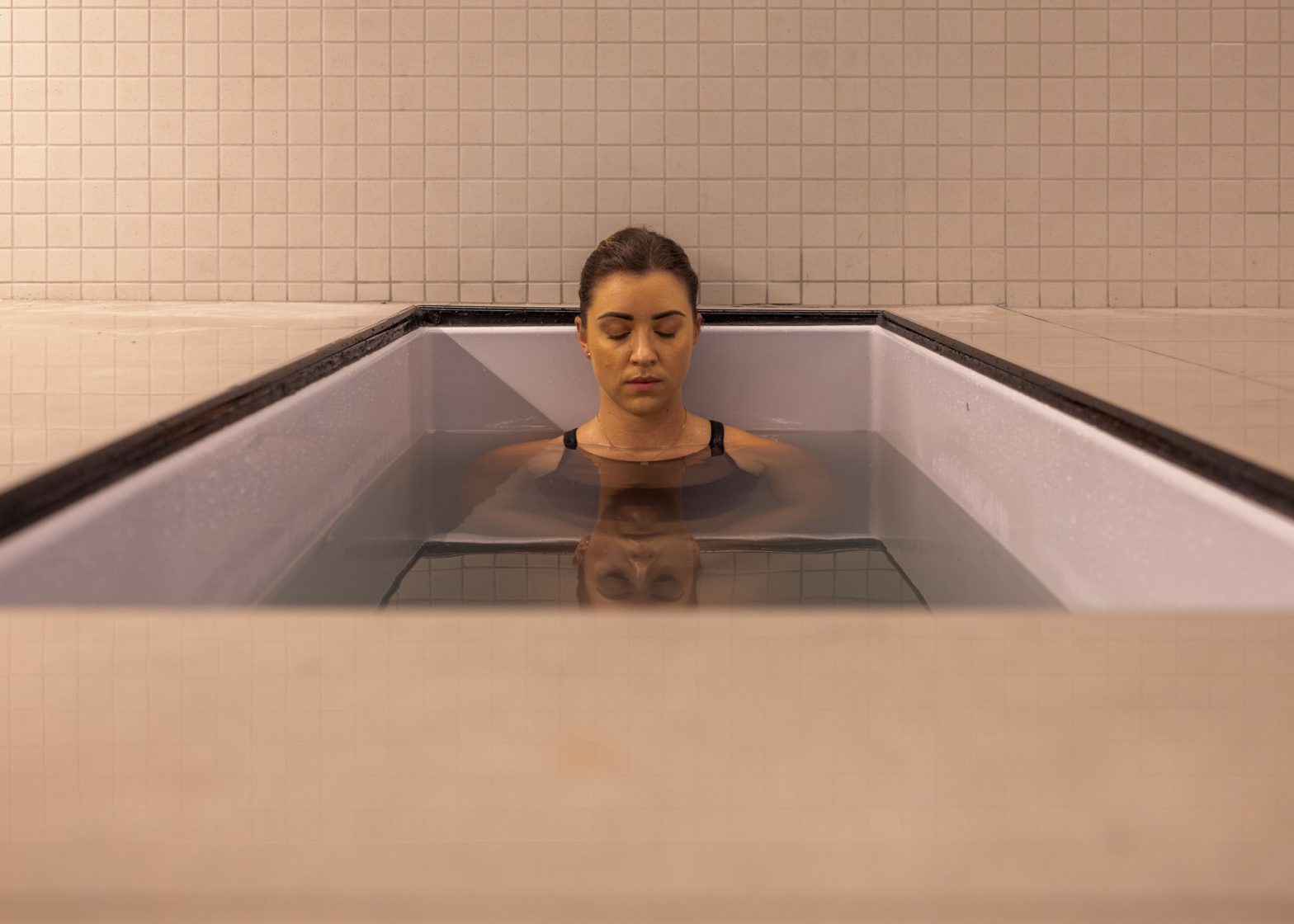As a result, fibromyalgia patients actively search for alternative treatment methods that could work for this condition. One of the experimental treatment remedies is ice bathing.
But, how does an ice bath help arm the central nervous system to combat fibromyalgia symptoms? Here is a detailed breakdown of the effects of an ice bath on patients suffering from this condition.
ARE ICE BATHS GOOD FOR FIBROMYALGIA RELIEF?
Using cold therapy for pain relief is beneficial both from the mental perspective and a physical one, as cold water has tangible therapeutic benefits and a possible placebo effect.
A significant practical benefit that an ice bath offers is that cold therapy can cause a substantial decrease in pain, especially in your muscles.
Muscle pain gets treated with cold water therapy by dropping the temperature so low in the affected areas blood vessels begin constricting, resulting in decreased blood flow. When your blood vessels are freezing cold, you should experience significant relief from pain as blood will not quickly get to the affected areas to cause inflammation.
As researchers see with people who prefer larger pills, believing in the treatment you’re taking has been shown to treat pain and other symptoms from various illnesses. Your mind plays a vital role in pain reduction, and cold water immersion stimulates brain activity.
HOW DOES AN ICE BATH FOR FIBROMYALGIA WORK?
Cold therapy reduces rheumatoid arthritis pain in fibromyalgia patients by attacking inflammation to lessen soreness in connective tissues and whole body fatigue. Cold therapy gets especially recommended when a rheumatoid arthritis attack is at its worst.
Your joint pain will get an instant and significant analgesic effect as your blood pressure gets slowed.
Rheumatoid arthritis pain relief can be achieved with cold therapy, as triggering thermal receptors with a pain spray or a cold pack lessens muscle spasms. However, whilst these methods are suitable for relieving targeted chronic pain, cold water immersion can attack pain wherever it may be on your body.
Since fibromyalgia or rheumatoid arthritis usually creates tender spots and soreness all over your body, a cold water plunge is better than a cold shower due to complete immersion.
In addition, cold water therapy can reduce chronic pain even better in controlled ice baths like ours. Finally, you won’t have a warm water issue like you would at home.
In places with a warm temperature, you’ll need to work harder to maintain your bath at a state that’ll allow effective treatment for pain caused by fibromyalgia.
ICE BATH FOR FIBROMYALGIA: WHAT DOES THE RESEARCH SAY?
Researchers have made contradictory statements about taking an ice bath to treat fibromyalgia. Most of the time, these conflicting statements stemmed from the lack of controlled research studies. For example, one study conducted back in 2015 that allegedly proved that colder temperatures help boost immune systems got discredited years after.
Why was this study discredited? The main concern was that participants in the study were involved in other forms of therapy, such as meditation and breathing techniques.
However, research has proven that people with fibromyalgia have a different physiological reaction when subjected to cold therapy.
Patients with fibromyalgia report a smaller sympathetic nervous system response when compared to a control group with a clean bill of health. Be that as it may, an ice bath is scientifically confirmed to release protective neurochemicals such as beta-endorphin hormones to protect the body and brain from hypothermia.
These chemicals improve brain function and reduce pain significantly. At first, these effects only last for so long, but the health benefits begin to be ongoing as time goes on. As a result, cold therapy can treat various conditions, including rheumatoid arthritis and delayed onset muscle soreness, by triggering cold receptors that release protective neurochemicals.
SHOULD YOU TRY ICE BATHS FOR FIBROMYALGIA?
Science backs up several evidence-based theories that claim that cold therapy works for chronic pain management. With all this scientific evidence, whether you will try cold water therapy is left up to your discretion.
Considering all the facts before deciding on alternate kinds of therapy is critical.
Cold therapy does not have adverse side effects unless you suffer from complex heart complications. Besides possible complications for people with heart diseases, there have been no long-term side effects of trying to use cold therapy to treat fibromyalgia.
On the contrary, there are many positive outcomes from implementing cold water therapy into one’s life routine. For example, the peripheral nerve endings gain protective properties over time, and joints can protect themselves from inflammation caused by rheumatoid arthritis.
FAQS
Fibromyalgia patients can have a guided ice bath session to ensure the process gets done safely. First, however, there are some core principles to remember when preparing for the cold therapy session detailed in this FAQ list.
DO ICE BATHS HELP NERVE PAIN?
Since ice bathing affects the central nervous system by releasing neurochemicals good for the immune system, you might be wondering if it has the same effects on nerve pain. The physiological reaction triggered by taking that cold plunge numbs nerve endings.
That numbing effect reduces pain significantly, which also helps alleviate pain from rheumatoid arthritis inflammation.
HOW MANY TIMES A WEEK SHOULD YOU TAKE AN ICE BATH?
An ice bath’s efficacy relies intensively on how often you take it. The number of safe visits for most people is not limited, but you can schedule the sessions at your discretion. It is important to note that some athletes tend to have a strict routine at first by having at least one session a day for ten days. From then, they can space out their ice bathing sessions across the weeks and months.
HOW LONG SHOULD I SIT IN AN ICE BATH?
An ice bath is different from other forms of cold therapy used for rheumatoid arthritis and fibromyalgia. For the improved function of your physiological immunity and nervous system, try to maximize the time you spend inside the cold water up to 15 minutes.
Most sessions last anywhere between 10-15 minutes, with the possibility of doing more than one session in a day.
WHAT SHOULD YOU DO AFTER AN ICE BATH?
Whether you took an ice bath for rheumatoid arthritis or are boosting your immune system, taking a warm or hot shower after going for a cold plunge is highly not recommended.
Your body has to reheat naturally to avoid shocking the nervous system with contradicting temperatures. So instead, consider taking a cold shower and allow your body to reheat until it is back to average temperatures.
FINAL THOUGHTS
Going for an ice bath might not be a displeasing thought after all. Given all the health and wellness benefits of this form of cold therapy, going for an ice bath can help reduce pain and fatigue.
Since these are the main symptoms of fibromyalgia, its effect can be minimized to a great extent while providing other side benefits. These side benefits include reducing inflammation from rheumatoid arthritis, increased cognitive function, and many other health-related advantages.




